Maurizio Sarri’s Chelsea clinched a top-four finish in the Premier League by beating Watford 3-0 at Stamford Bridge. However, Watford provided a much tougher opponent than the scoreline suggests. Two set-pieces at the beginning of the second half gave Chelsea a comfortable lead which Gonzalo Higuaín added to despite Watford creating plenty of good chances. This tactical analysis will look at what Watford did well to cause Chelsea problems.
Lineups
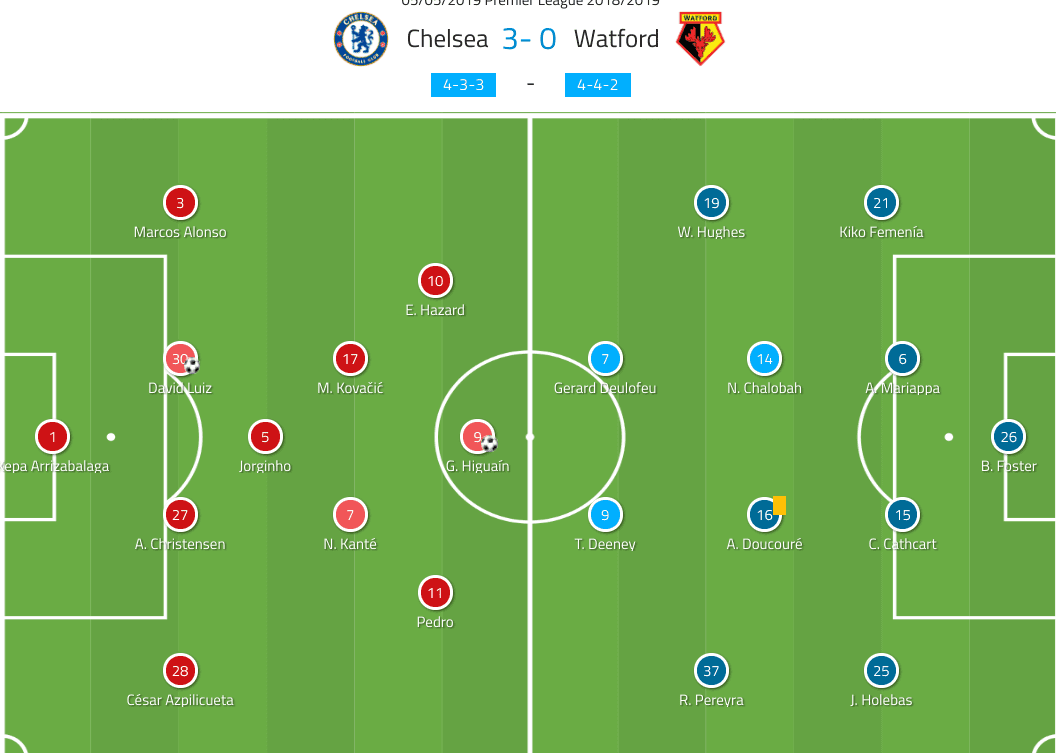
There were no surprises to how either side set up tactically. Chelsea started in a 4-3-3 while Watford used a 4-4-2/4-2-2-2 with their usual personnel, the only exception being Nathaniel Chalobah in midfield alongside Abdoulaye Doucouré. The main selection decision for Chelsea was who to start in midfield alongside N’Golo Kanté and Jorginho. Sarri chose Mateo Kovačić, but Ruben Loftus-Cheek entered the game already after a few minutes when Kanté was forced off due to injury.
Tactical analysis: Watford’s wingers’ movement
One of the key patterns of Watford’s tactics this season has been their narrow wingers. From their 4-4-2 shape when defending, the two wide players, most often Will Hughes and Roberto Pereyra, move inside to largely play in either half-space. In the image below, Pereyra (black) has moved into the half-space with the ball, leaving the wing free for the left-back José Holebas to attack. What Watford also did really well was that they always had players attacking the space in behind. In the image below, Troy Deeney and Doucouré make runs forward as Pereyra drives with the ball.
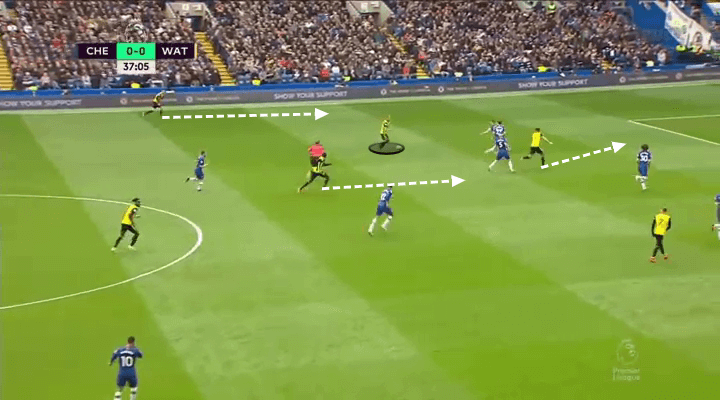
The image below highlights Will Hughes’s positioning with Doucouré in possession. His positioning leaves the entire right wing open for Kiko Femenía to attack. This narrow positioning of the wingers mainly had two effects on the game. Firstly, Hughes and Pereyra got into good positions in spaces that Chelsea struggled to defend. As the image below highlights, Hughes finds space behind Loftus-Cheek but outside Jorginho, meaning no Chelsea player had natural access to him.
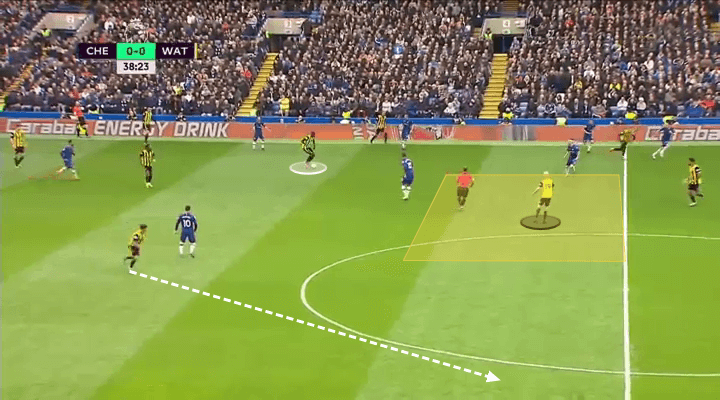
Secondly, the narrow positioning was a great asset when Watford looked to recover the ball. As Chelsea look to build attacks through the centre, a narrow midfield that pressed intensively was very successful in halting Chelsea’s grip on possession throughout the game. The image below is one example of Watford’s aggressive pressing, aided by having the wingers in narrow positions. Deeney puts pressure on Jorginho and the only pass available is the one to Loftus-Cheek. Chalobah, however, reads this pass and steps in to win the ball for Watford. Due to limiting the space around the ball, Watford could often win it back in central areas and then go on to counter-attack at pace with quick short-passing combinations with the players positioned so close to each other.
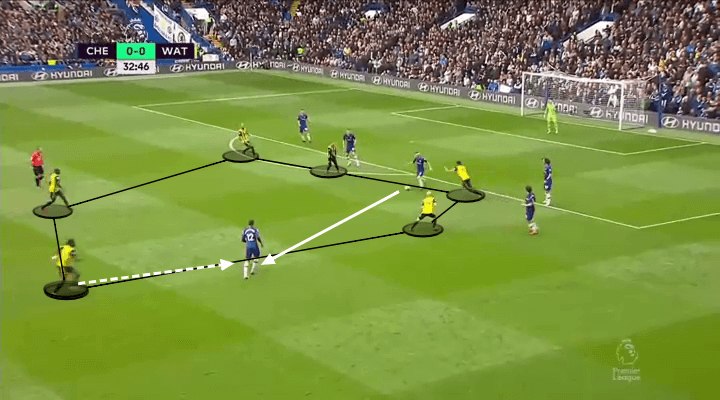
When not pressing high, Watford would drop into a 4-4-2 defensive shape which they kept very compact. It was obvious that Javi Gracia wanted to congest the space in front of his centre-backs with Chalobah and Doucouré prioritising defending the space rather than the opponent in their own half. They made really strong overloads on the ball-side, as shown in the image below, to prevent Chelsea from easily playing through their lines. The front-two of Deeney and Deulofeu would also drop back and connect to the midfield, creating a very compact defensive shape.
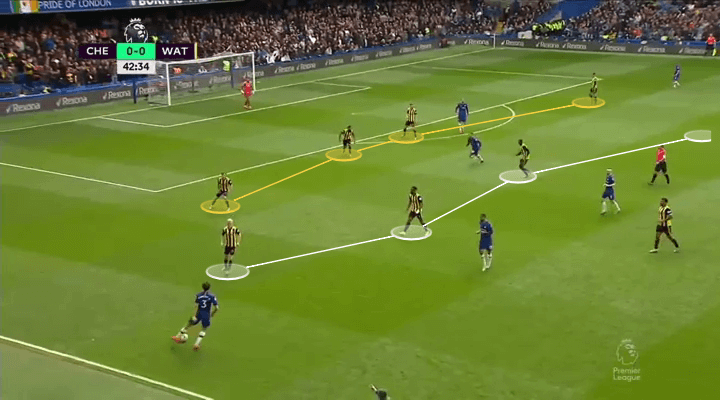
Watford’s use of Troy Deeney
One very effective part of Watford’s attacking play came through their use of Deeney. Ben Foster would often send the ball long towards the striker and then Watford’s midfielders were cleverly positioned around Deeney to pick up second balls. We can see this in the image below as Deeney wins a header against Andreas Christensen. Again, we can see the narrow positioning of the two wingers (black). With Deulofeu just behind and Doucouré moving forward, Watford were in great positions to pick up Deeney’s headers or counter-press should a Chelsea player receive the ball.
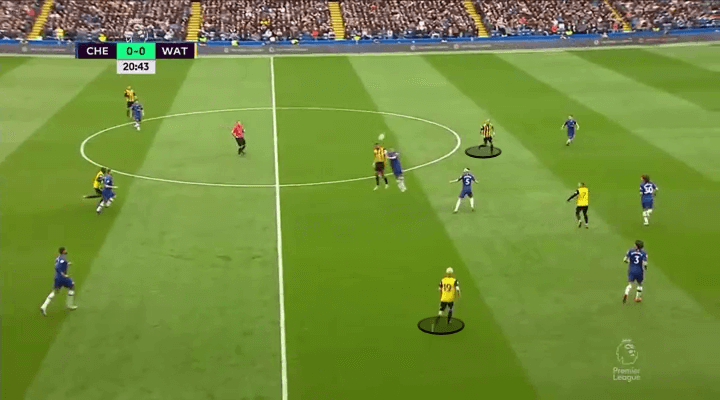
The image below is another example. Foster goes long towards Deeney who beats David Luiz in the air. Hughes, Deulofeu, Chalobah and Doucouré are all positioned in excellent positions to pick up the second ball, with Pereyra just out of shot.
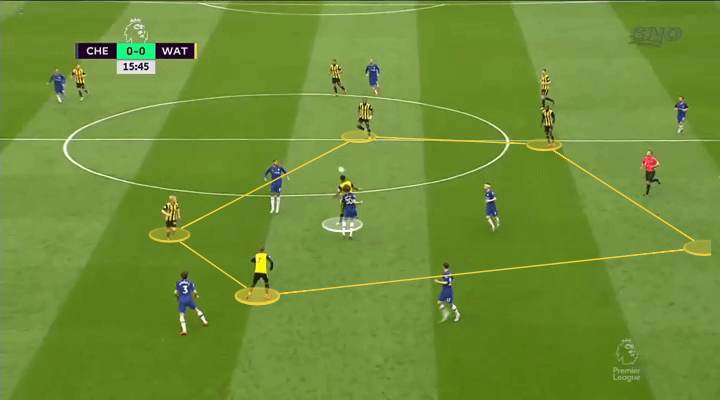
This might seem a very simple tactic, go long to the big guy, but the fact is Watford is a great example of how you can mix physicality with technique. Other than the obvious technicians such as Hughes, Pereyra and Deulofeu, the likes of Chalobah, Doucouré and Deeney are also excellent with the ball. When you add their physicality to their technique you start understanding why Watford is such a tough team to play. At Stamford Bridge, this tactic of finding Deeney with long balls before combining quickly or counter-pressing to recover the ball worked really well.
Chelsea use half-spaces to break through
Chelsea struggled in possession for large spells, especially in the first half, because of Watford’s aggressive press and compact defensive shape. They grew into the game, though, and when they found space to play into it was often the half-spaces that they chose to attack. The following image is a good example of how Chelsea managed to find space within Watford’s shape. Jorginho plays a first-time pass into Loftus-Cheek, who has plenty of space thanks to Chalobah being attracted to Jorginho. As the Englishman receives the ball, he can drive forward from within Watford’s shape.
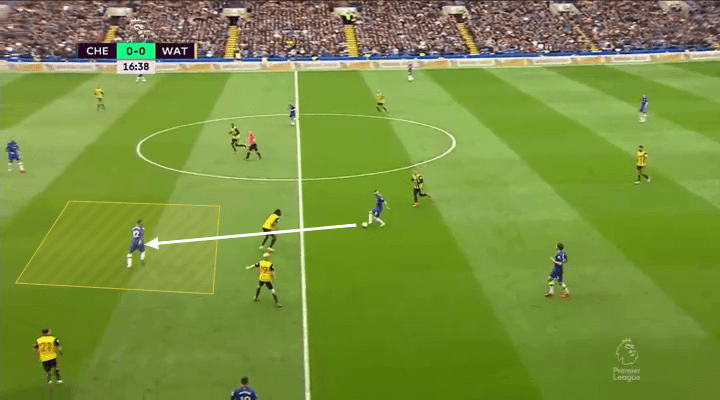
Watford’s press high up the pitch was often man-orientated. The numerical advantage in midfield, 3vs2, allowed Chelsea to exploit this by Kovačić often linking up well with César Azpilicueta to progress in the right-sided half-space. The image below highlights this very situation. Doucouré (yellow) has moved high to mark Jorginho. That leaves a huge space in the right-sided half-space for Kovačić to exploit. Azpilicueta plays a simple pass into the Croatian and Watford’s press has been broken.
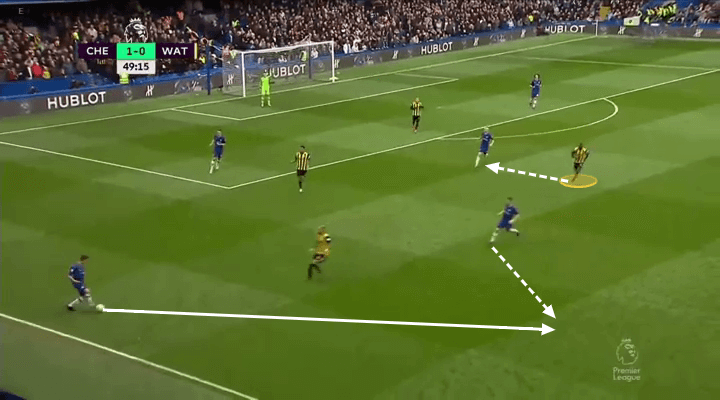
The image below highlights another example of Kovačić and Azpilicueta linking up to progress the ball in the right-sided half-space. Here, Doucouré is attracted to the Croatian’s first action, which was dropping off and playing the ball back to the right-back. Kovačić is then quicker than Doucouré to realise there is an empty space to run into. Azpilicueta plays the ball into space and Kovačić can progress the ball further.
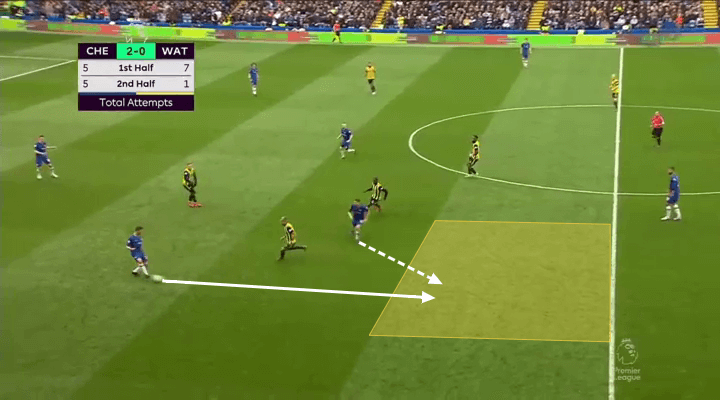
Chelsea never dominated possession as they would have liked, but the quality of their players meant they found interesting solutions against Watford’s solid defensive setup. Eden Hazard also caused a lot of trouble for Watford with his movement inside from the left wing, which meant Chelsea got a 4vs2 overload in central midfield at times.
Conclusion
As this analysis has shown, Watford provided a tough test for Chelsea. However, two set-piece goals in quick succession gave Chelsea a comfortable lead that they never surrendered. The win guarantees Chelsea Champions League football next season which is something Maurizio Sarri probably feels relieved about. Despite all the criticism he has faced, Chelsea is on course for a really good debut season under the Italian.
If you love tactical analysis, then you’ll love the digital magazines from totalfootballanalysis.com – a guaranteed 100+ pages of pure tactical analysis covering topics from the Premier League, Serie A, La Liga, Bundesliga and many, many more. Buy your copy of the April issue for just ₤4.99 here, or even better sign up for a ₤50 annual membership (12 monthly issues plus the annual review) right here.

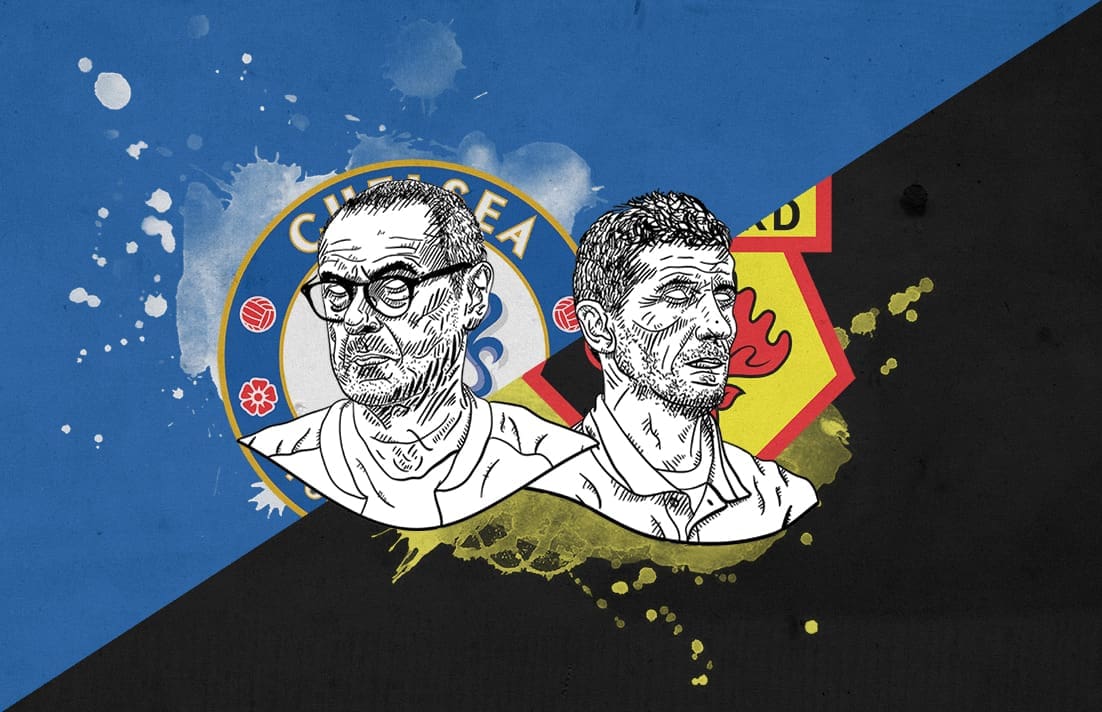



Comments